Exploring Nature-Based Coastal Innovation: Reflections from the Conference on Biodiversity, Ecology and Conservation of Marine Ecosystems in Hong Kong
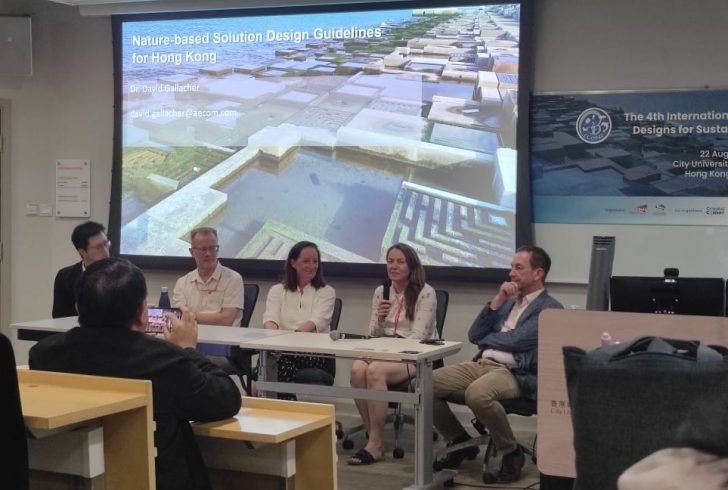

by: Katie Dafforn
This August, I had the privilege of representing the Stone Living Lab as a keynote speaker at the Conference on Biodiversity, Ecology and Conservation of Marine Ecosystems in Hong Kong, followed by a presentation and panel participation at the 4th International Workshop on Eco-Shoreline Designs for Sustainable Coastal Development.
My keynote focused on the Stone Living Lab’s work advancing nature-based approaches to coastal resilience, with a spotlight on cobble berms. I contrasted learnings from the six cobble berms sites around Boston with my previous research on cobble berms from Lake Macquarie, Australia. Overall, these interventions aim to restore ecological function while buffering shorelines against climate-driven impacts and are proving to be a popular alternative to vertical seawalls with municipalities.
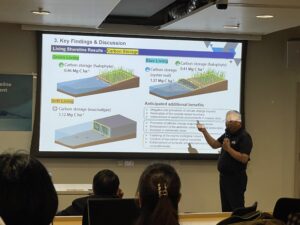 The workshop following the conference showcased a remarkable breadth of innovation and implementation across Asia and beyond. From Singapore, Professor Peter Todd shared pioneering work on hybrid shoreline systems through projects like MAGGShore, which integrates engineering, ecological and social consideration into multi-functional coastal defences, and SPINS, which is combining natural systems (like mangroves and corals) with engineering solutions to protect Singapore’s coastline. Professor Jong Seong Khim spoke of carbon storage results from large-scale Living Shorelines work in South Korea.
The workshop following the conference showcased a remarkable breadth of innovation and implementation across Asia and beyond. From Singapore, Professor Peter Todd shared pioneering work on hybrid shoreline systems through projects like MAGGShore, which integrates engineering, ecological and social consideration into multi-functional coastal defences, and SPINS, which is combining natural systems (like mangroves and corals) with engineering solutions to protect Singapore’s coastline. Professor Jong Seong Khim spoke of carbon storage results from large-scale Living Shorelines work in South Korea.
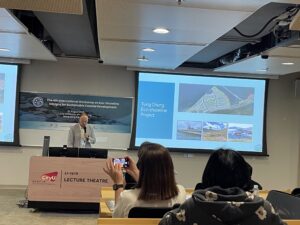 From Hong Kong, the scale and ambition of nature-based implementation were especially striking. The Tung Chung Eco-Shoreline Project has already recorded over 100 marine species colonizing newly designed intertidal habitats. These designs, ranging from mangrove zones to vertical eco-blocks demonstrate how eco-engineered shorelines can support biodiversity while also providing flood protection.
From Hong Kong, the scale and ambition of nature-based implementation were especially striking. The Tung Chung Eco-Shoreline Project has already recorded over 100 marine species colonizing newly designed intertidal habitats. These designs, ranging from mangrove zones to vertical eco-blocks demonstrate how eco-engineered shorelines can support biodiversity while also providing flood protection.
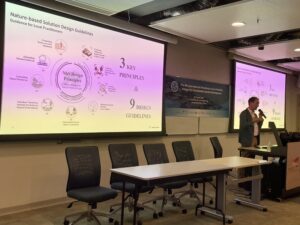 A highlight of the workshop was the presentation by David Gallacher, who introduced Hong Kong’s new Nature-Based Solution Design Guidelines. These guidelines aim to mainstream ecological thinking in infrastructure planning, offering practical advice for design, implementation, and monitoring in urban coastal contexts.
A highlight of the workshop was the presentation by David Gallacher, who introduced Hong Kong’s new Nature-Based Solution Design Guidelines. These guidelines aim to mainstream ecological thinking in infrastructure planning, offering practical advice for design, implementation, and monitoring in urban coastal contexts.
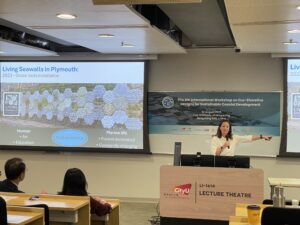 The panel I joined featured experts from Hong Kong, Singapore, and Ireland, including a member of the SLL Scientific Advisory Panel, Dr Louise Firth, whose interdisciplinary research and fun approach to sharing her learnings continues to inspire. Her talk emphasized the importance of historical ecology and collaborative design in shaping resilient, multifunctional coastlines.
The panel I joined featured experts from Hong Kong, Singapore, and Ireland, including a member of the SLL Scientific Advisory Panel, Dr Louise Firth, whose interdisciplinary research and fun approach to sharing her learnings continues to inspire. Her talk emphasized the importance of historical ecology and collaborative design in shaping resilient, multifunctional coastlines.
I’m deeply grateful to the organizers, especially Professor Kenneth Leung, for convening such a visionary and collaborative event. It was insightful to see results from Living Seawalls presented from Ireland and South Korea. At the Stone Living Lab, we’re excited to continue building partnerships and sharing knowledge across global regions. The momentum for nature-based solutions is global and growing.